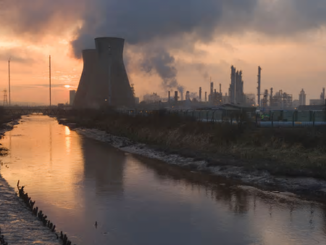
Mon 5 Mar 2018 08.00 GMT Arthur: Ruth Khasaya Oniang’o
Our food – from what we eat to how it is grown – accounts for more carbon emissions than transport and yet staple crops will be hit hard by global warming
Did you know that what’s on your plate plays a larger role in contributing to climate change than the car you drive? When most wealthy people think about their carbon footprint, or their contributions to climate change, they’ll think about where their electricity and heat come from or what they drive. They’ll think about fossil fuels and miles per gallon, about LED lights and mass transit – but not so much about combine harvesters or processed meals or food waste. Few consider the impacts of the food they eat, despite the fact that globally, food systems account for roughly one quarter of all manmade greenhouse gas emissions. That’smore than the entire transportation sector, more than all industrial practices, and roughly the same as the production of electricity and heat.
Meanwhile, the most immediate threat of climate change for most of the global population will be at the dinner table, as our ability to grow critical staple crops is being affected by the warming we’ve already experienced. Between 1980 and 2008, for instance, wheat yields dropped 5.5 % and maize yields fell 3.8% due to rising temperatures. Climate change threatens the food security of millions of poor people around the world. Young people are increasingly keen to protect the environment by shifting to animal-product-free diets. They seek plant proteins which taste like meat, while insects are also growing popular as an alternative.
What these inverse challenges – that food and agriculture are both enormous contributors to climate change, and massively impacted by it – really tell us is that our food systems, as currently structured, are facing major challenges.
There is a much larger problem that implores us to look beyond farm and agricultural practices. We need to open our eyes to solutions that address the full scope of the challenge to create more sustainable and equitable food systems. That way, we can provide healthy food for all people while we protect our planet’s resources at the same time.
So what are food systems? Everything from seed and soil to the supermarket to the plate to the landfill. Food systems include the growing, harvesting, processing, packaging, transporting, marketing, consumption, and disposal of food and food-related items.
While farming alone accounts for 10-12% of global greenhouse gas emissions, when we look at entire food systems the contributions to climate change more than double. A recentreport published by the Meridian Institute lays out the many factors throughout food systems that spell trouble for the climate, and also explains why a broad systems-wide perspective is necessary for implementing effective changes.
Consider deforestation and soil. A narrow view of agriculture alone would neglect the fact that a full 80% of the forests that are clear cut or destroyed are done so to create farmland. Forests are massive carbon sinks. So is soil, locking away two to three times as much carbon as there is present in the atmosphere. But farmers can help restore ecosystem functions and build resilient communities by producing crops and livestock in productive ways that sequester carbon and protect forests.
Or consider food waste. Not just the scraps that you throw away, but throughout the entire food system. A staggering 30-40% of the food produced in the world is never eaten. Some never gets harvested, some spoils before it reaches consumers, and a lot is tossed away by retailers, restaurants, and at home. For the sake of comparing emissions, if food waste were its own country it would be the third largest greenhouse gas emitter in the world, after only China and the United States.
This says nothing of the gross injustice of wasting so much food while so many in the world go hungry. In the developing world, improving infrastructure along the food chain – including cold storage – would prevent much good food being lost. In the developed world, retailers can prevent large amounts of waste by finding outlets for slightly blemished goods and consumers can limit waste by buying food in amounts they actually want and need.
There are countless more examples of challenges and solutions all throughout the food system — from production of fertiliser to distribution systems to the production of dried and purified foods that make up processed meals to the diets and lifestyles of the public. Everyone has a role to play; these challenges cannot be solved in a vacuum.
The complex, dynamic, and widely diverse forms of the world’s many food systems yield some wildly divergent outcomes in terms of nutrition, health, and environmental and climate impacts. It is critical that we start to better examine what works in some systems and what must be improved in others, in order to produce more equitable, just, and sustainable outcomes around the world.
Just as there’s no universal crop that grows everywhere, there’s no “one size fits all” model food system to implement across the world. A broader systems-wide perspective is necessary if there is any hope for truly transformative change. It’s time to look beyond farming and agriculture and to see the whole picture, to create systems that cause less harm to the climate and are more resilient to the impacts we’re already suffering from global warming.
Food is a fundamental human need and to eat is a basic human right. Our food systems must deliver that need, fairly and equitably, without worsening the impacts of climate change.
Ruth Khasaya Oniang’o is an academic and a winner of the 2017 Africa Food prize
Visits: 1




globally, food systems account for roughly one quarter of all manmade greenhouse gas emissions.